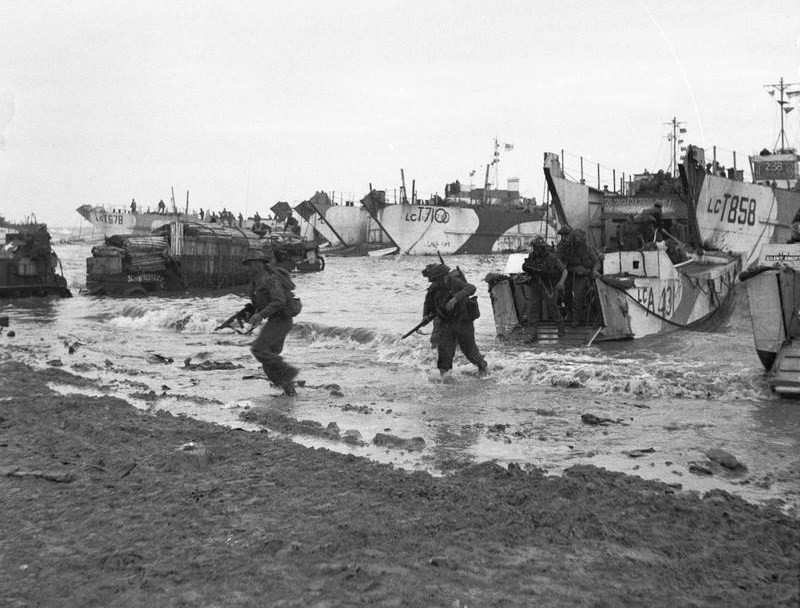The 50th British Infantry Division led by Major General Douglas Graham had been seasoned in the North African campaign. On D-Day, Gold was the code name for the beach that was assigned to this division, located between Ver-sur-Mer and Asnelles on the Normandy coast.
The battlefield was made up of flat areas interrupted by sand dunes that concealed vast swamps. The topography made this landing easier than the ones on Omaha Beach and Juno Beach. The former was too steep while the latter, as it was urbanised, forced the Canadian troops to fight in the village streets. The German strategists considered Gold an unlikely landing beach, for this reason the defences were relatively weak.
The German heavy artillery batteries, located slightly further inland, were swiftly and effectively bombarded by ships and by planes. The first British soldiers set foot on Gold Beach at 07:25. Even though the operations went fairly well, they had to overcome fierce resistance in the area called La Rivière, between the landing beach and the village of Ver-sur-Mer.
Another unit, which landed almost unopposed east of Asnelles, had to deal with a German strongpoint at Le Hamel. The British troops managed to take that stronghold by the end of the day with the support of tanks. In the meantime, additional units had landed and gone further inland. They accomplished the farthest advance on D-Day of all Allied seaborne forces. This swift move made it possible to take Arromanches in the evening and, the day after, the town of Bayeux, which fell into British hands almost undamaged.
